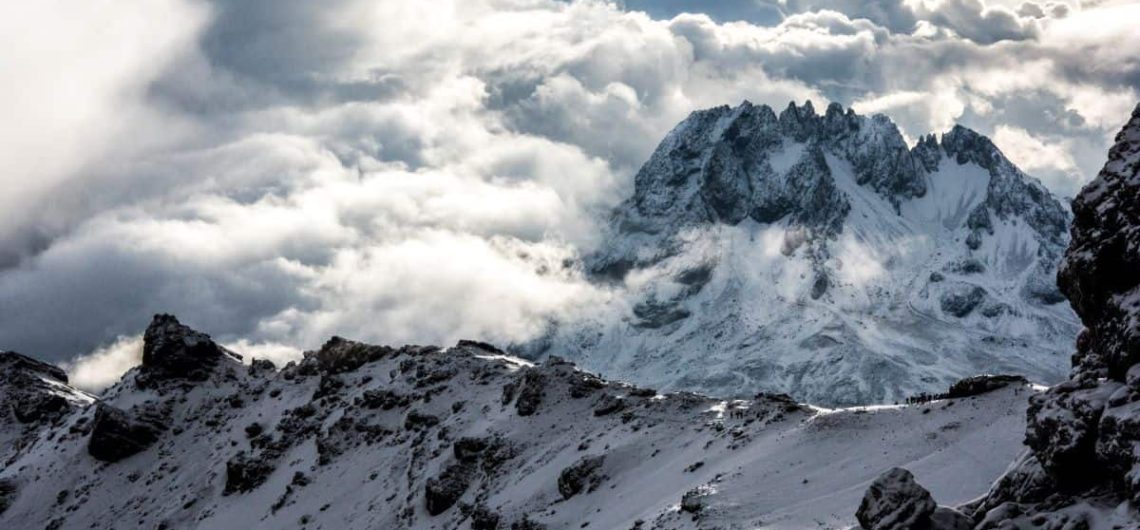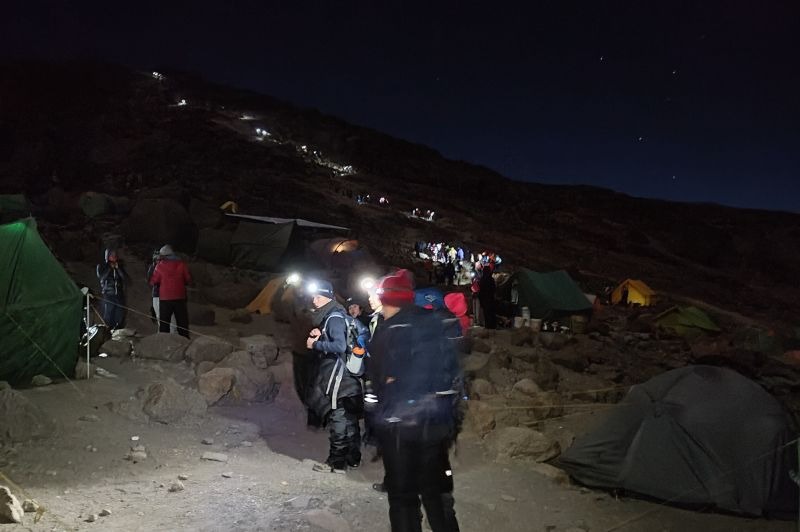Uhuru Peak is the highest point on Mount Kilimanjaro and one of the most sought-after destinations for hikers and mountaineers. At an elevation of 5,895 meters (19,341 feet), the temperatures at Uhuru Peak can be extreme and challenging.
The temperature at Uhuru Peak, the highest point on Mount Kilimanjaro, can vary greatly depending on the time of year, but it is typically very cold. The average temperature at Uhuru Peak is around -5 degrees Fahrenheit (-21 degrees Celsius). However, the temperature can drop below freezing at night, and it is not uncommon for the temperature to reach -20 degrees Fahrenheit (-29 degrees Celsius). It is important to be prepared for the cold weather when you are planning to climb Kilimanjaro. Be sure to pack warm clothing, including a down jacket, a hat, gloves, and a scarf. It is also a good idea to pack a sleeping bag that is rated for below-freezing temperatures.
The average temperature at Uhuru Peak is about 32 degrees Fahrenheit (0 degrees Celsius).
Why is the summit of Kilimanjaro so cold?
The temperature at the summit is so cold because of the high altitude. The air at high altitudes is thinner and has less oxygen, which makes it harder for the body to stay warm. The sun’s rays are also less powerful at high altitudes, so there is less heat to warm the air.
Climbers who are planning to summit Mount Kilimanjaro should be prepared for the cold temperatures at Uhuru Peak. They should pack warm clothing, including a hat, gloves, and a down jacket. They should also drink plenty of fluids to stay hydrated.
Daytime Temperatures
During the day, temperatures at Uhuru Peak can range from -5°C to 5°C (23°F to 41°F), depending on the season and weather conditions. The sun can be intense at this altitude, so it is important to wear sunscreen, a hat, and sunglasses to protect yourself from sunburn and eye damage.
Nighttime Temperatures
Nighttime temperatures at Uhuru Peak can drop significantly, with temperatures ranging from -15°C to -25°C (5°F to -13°F). This extreme cold can make it difficult to sleep, so it is important to wear warm, insulated clothing and to bring a good quality sleeping bag that is rated for cold temperatures.
What to wear to combat the cold at the summit
To ensure a successful climb and avoid hypothermia or frostbite, it is essential to bring proper gear and clothing for the cold temperatures at Uhuru Peak. This includes insulated jackets, pants, hats, gloves, and warm socks. It is also important to bring a good quality sleeping bag that is rated for cold temperatures and to use a sleeping pad to insulate yourself from the cold ground.
How to stay warm at Uhuru Peak
Here are some tips for staying warm at Uhuru Peak:
- Dress in layers. This will allow you to adjust your clothing as needed to stay warm.
- Wear a hat, gloves, and a scarf. These will help to keep your head, hands, and neck warm.
- Drink plenty of fluids. This will help to prevent dehydration, which can make you feel cold.
- Move around. This will help to generate heat.
- Sleep in a warm sleeping bag.
- If you are feeling cold, take a break from hiking and warm up in your tent.
- Be aware of the signs of altitude sickness. If you are feeling dizzy, nauseated, or have a headache, it is important to descend to a lower altitude.
By following these tips, you can stay warm and comfortable at Uhuru Peak and continue your climb to the summit of Mount Kilimanjaro.
Uhuru Peak, Extreme Weather
Uhuru Peak is a challenging and high-altitude destination on Mount Kilimanjaro, with extreme weather and temperatures that can fluctuate significantly between day and night. It is essential to bring proper gear and clothing to ensure a successful climb and avoid hypothermia or frostbite. By being prepared and informed about the temperatures at Uhuru Peak, you can increase your chances of reaching the summit and having a safe and memorable climb.
![]()



Comments